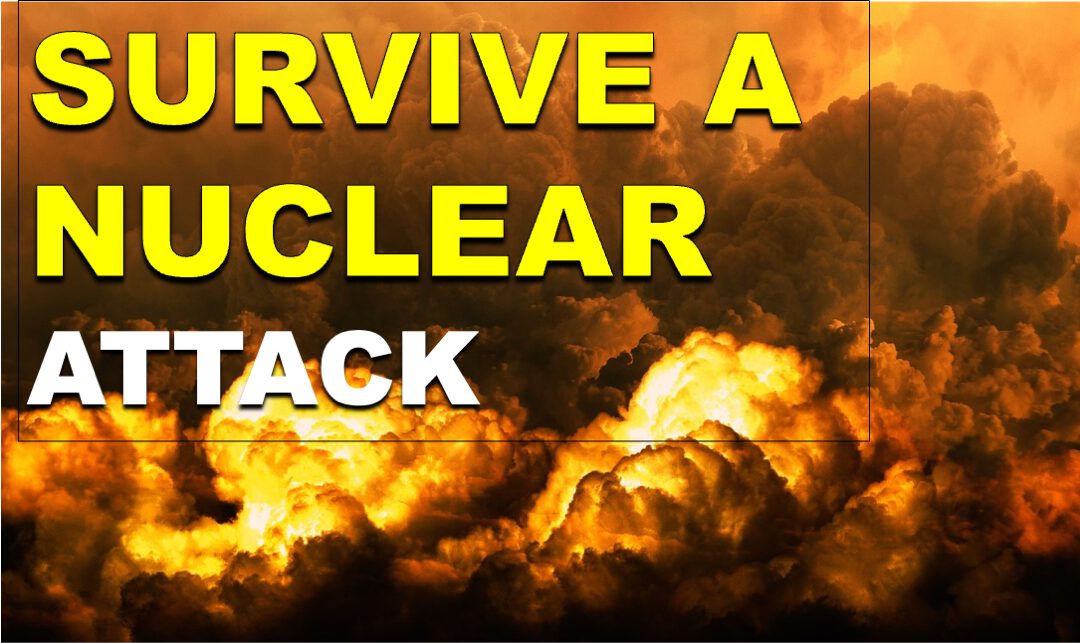What Happens If a Nuclear Bomb Is Used And How to Protect Yourself
Abstract
A nuclear detonation represents one of the most catastrophic threats to human civilization, capable of causing immediate mass casualties and long-term environmental and health consequences. This article explains the physical and biological impacts of nuclear explosions, from the initial blast to fallout radiation, and provides science-based protective strategies. Supported by peer-reviewed scientific literature and government emergency preparedness protocols, the goal is to educate and empower the public with knowledge rooted in evidence and global security research.
1. The Physics of a Nuclear Explosion
A nuclear bomb produces immense energy through fission or fusion reactions. In milliseconds, temperatures exceed millions of degrees Celsius. The energy is released in the form of:
- Thermal radiation
- Blast overpressure
- Ionizing radiation
- Electromagnetic pulse (EMP)
Immediate Effects:
- Fireball incinerates everything within 1–2 km [1]
- Flash blindness within 10–20 km [2]
- Shockwave causes structural collapse and debris injuries [3]
2. Radiation and Fallout
Radiation is the most insidious aftermath. There are three types of ionizing radiation post-detonation:
- Initial radiation: within seconds of detonation (mainly gamma rays and neutrons)
- Residual radiation: radioactive fallout lasting hours to weeks
- Induced radiation: from neutron activation of surrounding materials
Fallout Dynamics:
- Fallout begins within 15–30 minutes, depending on wind and altitude [4]
- Radioactive particles can travel hundreds of kilometers [5]
Health Consequences:
- Acute Radiation Syndrome (ARS): nausea, vomiting, immune failure [6]
- Increased lifetime cancer risk [7]
- Thyroid cancer risk from I-131 exposure [8]
3. Protective Actions (Evidence-Based)
Get Inside:
- Concrete structures reduce gamma radiation by 90% [9]
- Basements offer up to 100x more shielding than wood-frame homes
Stay Inside:
- Fallout loses 50% of its radiation in 1 hour, 80% in 24 hours [10]
- Remain sheltered for at least 24–72 hours [11]
Seal the Environment:
- Tape windows and doors to reduce particulate infiltration
- Use HEPA filters or improvised cloth filters if ventilation is needed
Decontamination:
- Removing clothing eliminates 90% of external contamination [12]
- Soap and water remove particles; avoid conditioner (binds radioactive particles)
Food and Water Safety:
- Avoid open water sources and unsealed foods
- Eat from sealed, canned, or packaged items only [13]
4. Long-Term Global Risks
Climate Effects:
- Soot and ash from urban firestorms enter the stratosphere
- Models suggest nuclear winter could reduce global temperatures by 1–5°C [14]
Agricultural Collapse:
- Reduced sunlight and rainfall → decreased crop yields
- Famine risks could impact billions [15]
Psychological and Social Impact:
- PTSD and mass displacement
- Breakdown of public services, healthcare, and governance [16]
5. Conclusion
While the threat of nuclear war is catastrophic, science offers strategies for increasing survival. Public education, policy reform, and emergency planning are essential. Understanding the mechanisms of nuclear weapons and protective measures could make the difference between life and death.
References
- Glasstone, S., & Dolan, P. J. (1977). The Effects of Nuclear Weapons. U.S. Department of Defense.
- Mettler, F. A., & Voelz, G. L. (2002). Major radiation exposure—what to expect and how to respond. New England Journal of Medicine, 346(20), 1554–1561.
- FEMA. (2021). Nuclear Explosion: What to Do If It Happens. Ready.gov.
- IAEA. (1999). Nuclear Accident Scenarios and Consequences. International Atomic Energy Agency.
- UNSCEAR. (2000). Sources and Effects of Ionizing Radiation. United Nations.
- Waselenko, J. K., et al. (2004). Medical management of the acute radiation syndrome: recommendations of the Strategic National Stockpile Radiation Working Group. Annals of Internal Medicine, 140(12), 1037–1051.
- BEIR VII Phase 2 Report. (2006). Health Risks from Exposure to Low Levels of Ionizing Radiation. National Academies Press.
- WHO. (2006). Health effects of the Chernobyl accident and special health care programmes.
- NCRP Report No. 138. (2001). Management of Terrorist Events Involving Radioactive Material.
- CDC. (2019). Radiation Emergencies: Nuclear Detonation. Centers for Disease Control and Prevention.
- Department of Homeland Security. (2010). Planning Guidance for Response to a Nuclear Detonation.
- EPA. (2020). Radiation Emergency Assistance Center/Training Site (REAC/TS).
- Redlener, I., et al. (2018). Nuclear Preparedness: Public Health and Medical Strategies. Columbia University.
- Robock, A., Toon, O. B., et al. (2007). Climatic consequences of regional nuclear conflicts. Atmospheric Chemistry and Physics, 7(8), 2003–2012.
- Xia, L., et al. (2022). Global food insecurity and famine from reduced crop, marine fishery and livestock production due to nuclear war soot injection. Nature Food, 3, 586–596.
- Havenaar, J. M., et al. (1997). Long-term mental health effects of the Chernobyl disaster. J Nerv Ment Dis, 185(9), 598–604.

